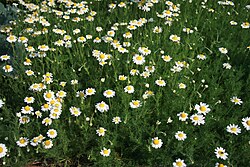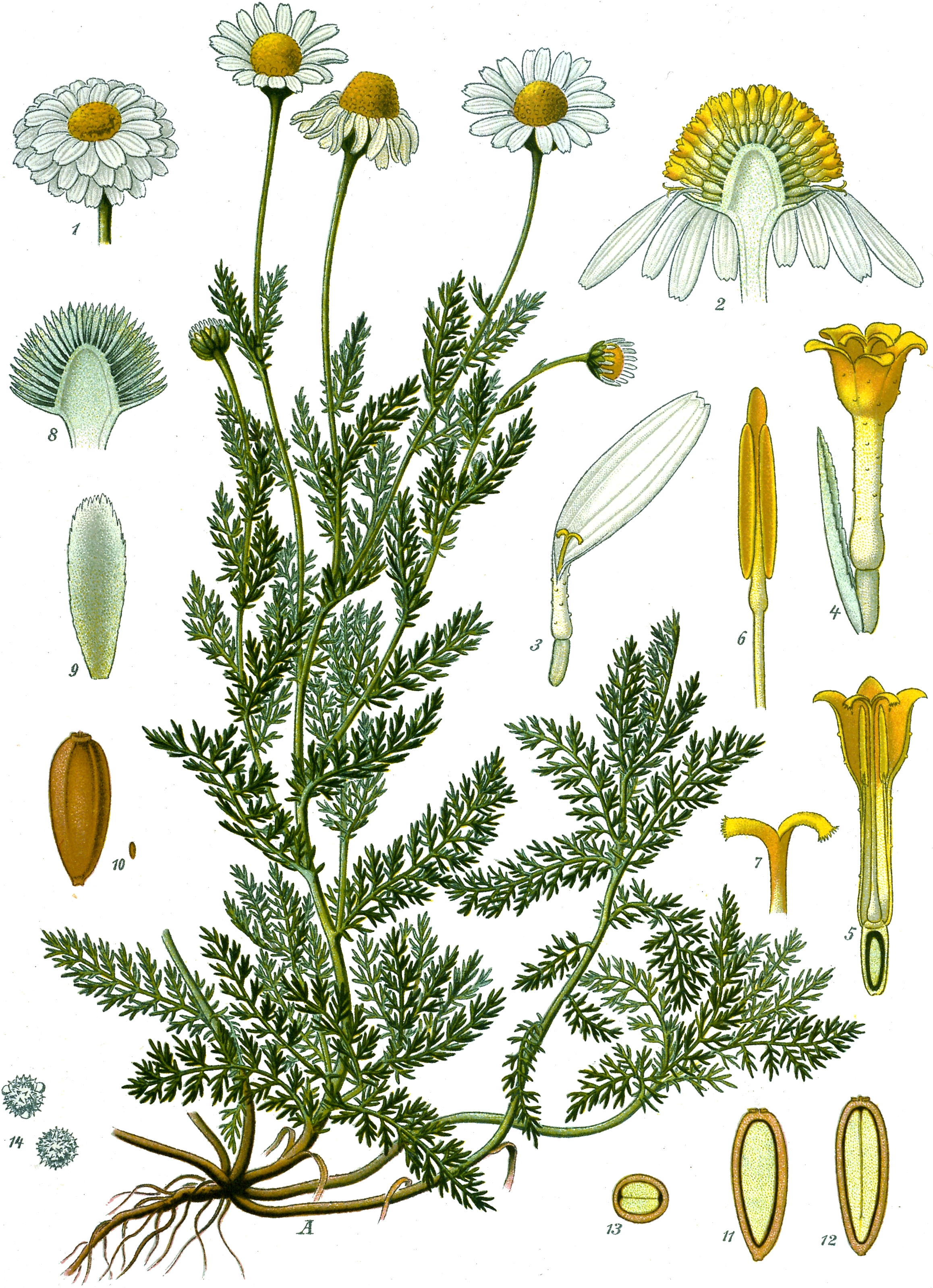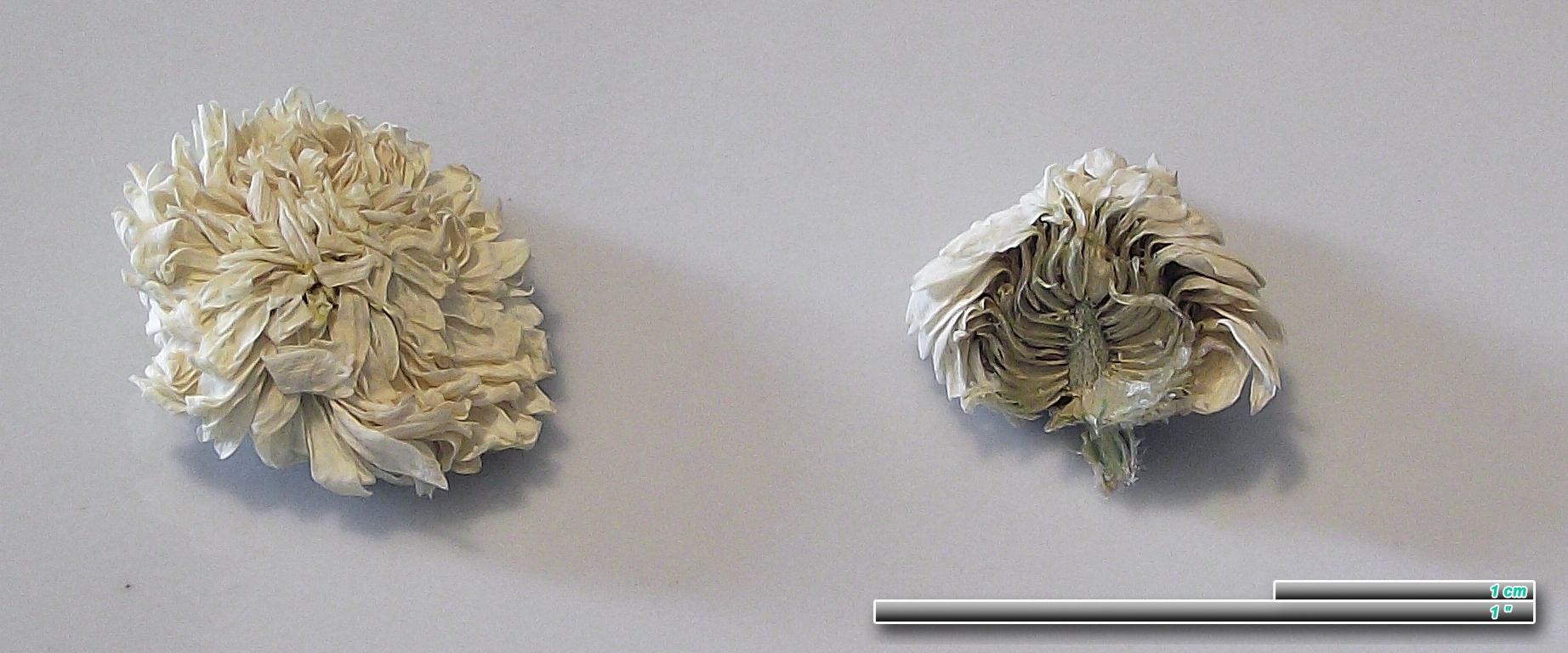Chamaemelum nobile: Difference between revisions
Jump to navigation
Jump to search
No edit summary |
No edit summary |
||
| Line 1: | Line 1: | ||
{{Species page (seed plant) | {{Species page (seed plant) | ||
|image = | |image = Anthemis nobilis prg 1.jpg | ||
|legend = | |legend = | ||
|author = (L.) All. | |author = (L.) All. | ||
| Line 18: | Line 18: | ||
== Biology == | == Biology == | ||
*Leaves compound with filiform segments. | |||
*Receptacle with paleas between the flowers. | |||
== Classification == | == Classification == | ||
| Line 29: | Line 31: | ||
== History == | == History == | ||
[[File:Chamaemelum nobile - Köhler–s Medizinal-Pflanzen-012.jpg|drawing from Köhler's Medizinal-Pflanzen]] | |||
== Uses == | == Uses == | ||
[[File:Chamomillae romanae flos dried.jpg|dried double flowers]] | |||
== References == | == References == | ||
Revision as of 15:40, 4 July 2012
Chamaemelum nobile (L.) All.
| Order | Asterales |
|---|---|
| Family | Compositae |
| Genus | Chamaemelum |
2n =
Origin : area of origin
wild or cultivated
| English | {{{english}}} |
|---|---|
| French | {{{french}}} |
Popular names
- English: Roman chamomile
- French: camomille romaine
see general discussion on chamomile.
Biology
- Leaves compound with filiform segments.
- Receptacle with paleas between the flowers.
Classification
Chamaemelum nobile (L.) All. (1785)
syn.:
- Anthemis nobilis L. (1753)
Cultivars
The most commonly cultivated forms have double flowers, with only white ligulate flowers.


